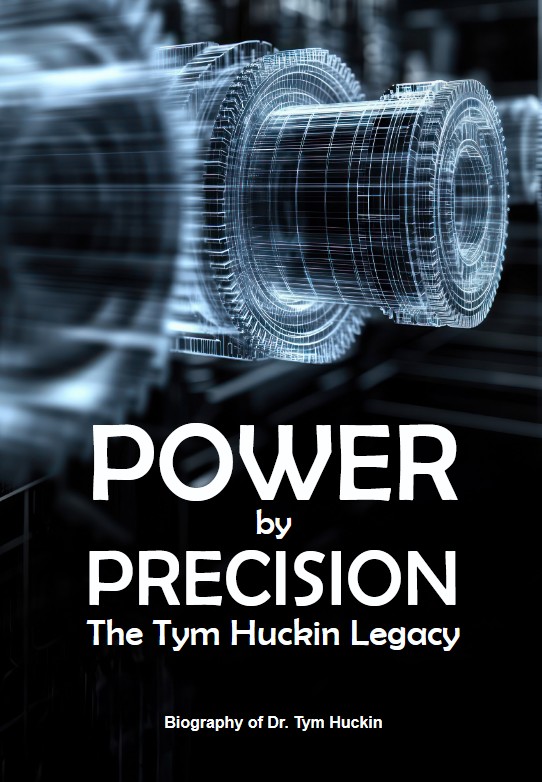

The best way to predict the future is to invent it.
Introduction
In the vast landscape of technological advancement, there are individuals whose names rarely make headlines—but whose work shapes the very foundations on which industries stand. Dr. Tym Huckin is one such individual. A pioneer in the world of unmetered energy systems, Tym has quietly led a revolution that transformed the way we manage, process, and understand energy consumption at a national scale.
Over the span of 24 years, Tym’s contributions have reached beyond software and spreadsheets. His vision has enabled efficiency, transparency, and accountability in a field that few understand deeply—but many rely on. From building systems that replaced outdated legacy platforms, to designing tools that became industry standards like Lailoken and Calitor, Tym has consistently delivered innovation with integrity
This biography captures the story behind the systems: the man, the mission, and the methodology. It’s a journey through code and collaboration, through technical rigour and quiet leadership. It offers readers not only a timeline of achievements, but also a window into the values that fuelled them—precision, service, resilience, and excellence.
Here, you will explore how one man’s commitment to doing things the right way laid the groundwork for trusted partnerships with local authorities, national utilities, and regulatory bodies across the United Kingdom. You will also discover the story of a leader who never stopped learning, never compromised on quality, and always believed that every detail mattered—because behind every watt tracked and every MPAN validated was a promise to serve with clarity.
This is not just the story of software. It is the story of legacy through leadership.
Welcome to the world of Dr. Tym Huckin.
Phase 1 : A Spark in the Shadows
“Success is not the key to happiness. Happiness is the key to success.”
At the turn of the new millennium, in a corner of the energy sector largely overlooked by the limelight, a quiet revolution was about to begin. The unmetered electricity supply industry—known for its labyrinthine data structures, opaque processes, and often underappreciated significance—was not the kind of arena that drew attention. But Dr. Tym Huckin, a man driven by logic, purpose, and a passion for clarity, saw something others didn’t: potential.
In 2001, Dr. Tym secured a contract that would change not only his trajectory, but the way the sector managed its heartbeat—the inventory. Tasked by Norweb with processing 20 monthly inventories for the Unmetered Supply Operator (UMSO), Dr. Tym stepped into a domain riddled with legacy systems, inconsistencies, and rigid methodologies. Where others saw bureaucracy and burnout, Dr. Tym saw an elegant challenge—a puzzle to solve, not with brute force, but with precision, intelligence, and innovation.
This was not just another data-entry job. It was a foundational moment—the spark that would ignite a two-decade-long contribution to national infrastructure. When Norweb transitioned through acquisitions—first to United Utilities, and later to Electricity North West (ENW)—many contracts and contributors fell by the wayside. Dr. Tym’s work however, endured. More than endurance, it thrived. His system didn’t merely adapt to change; it absorbed it, streamlined it, and delivered better outcomes at every stage.
Over the course of more than a decade, Dr. Tym processed over 3,000 unique inventories, working closely with 20 local authorities. Each file was a microcosm of municipal infrastructure—representing thousands of streetlights, traffic signals, illuminated signs—all-consuming power without a conventional meter. In an environment where accuracy was paramount and errors could result in millions in settlement discrepancies, Dr. Tym became not just a vendor but a trusted custodian of data integrity.
He didn’t just provide a service. He became the unseen backbone of countless public utilities. His quiet consistency and obsession with accuracy slowly redefined expectations within a sector not known for innovation. His work brought not just technical accuracy, but a sense of reliability and calm in a sea of complexity.
This chapter of his journey wasn’t just about contracts or codes—it was about a man standing at the edge of obscurity and choosing to light the path ahead. With no roadmap but plenty of resolve, Tym Huckin stepped into the shadows of an invisible industry—and sparked a legacy that would burn brighter with every passing year.
Phase 2 : Replacing the Giants
“Innovation distinguishes between a leader and a follower.”
There are moments in every industry’s evolution when titans fall—not with a crash, but with a quiet replacement. In the world of unmetered electricity supply, such a moment arrived with the gradual disappearance of LAMPOST, a legacy system that had long been entrenched in the operations of major players like Aquila, and Western Power Distribution. For years, LAMPOST had been the default language of inventory management. It was accepted, understood, and deeply embedded—but it was also outdated, inflexible, and no longer fit for a sector demanding precision, adaptability, and growth.
While others tolerated the inefficiencies of the old system, Dr. Tym quietly built something better. He didn’t advertise it with fanfare. Instead, he focused on engineering a solution so seamless, so intelligently designed, that it didn’t just compete with LAMPOST—it made it irrelevant. His proprietary database system, originally designed to manage Norweb’s 20 inventory submissions, had matured. It had evolved from a tool into a platform, one capable of managing complexity with elegance and consistency.
What began as a replacement system was now being adopted by giants of the industry—first Aquila, followed by Western Power Distribution. These weren’t casual clients; they were the very companies LAMPOST had served for decades. By selecting Dr. Tym’s system over the established norm, these companies sent a powerful message: innovation had outpaced legacy. Dr. Tym hadn’t just written software; he had rewritten the rules of the game.
The shift wasn’t only technical—it was cultural and systemic. The migration to Dr. Tym’s system meant better data accuracy, faster processing, smoother compliance with regulatory standards, and ultimately, greater trust in the outputs. Local authorities, once bogged down by misaligned data and complex reconciliation processes, now had access to a cleaner, smarter way of working. Dr. Tym’s system became a quiet standard-bearer of quality.
As more local authorities transitioned, Dr. Tym’s expertise deepened. His database touched over 100 unique local authority inventories, each with its own structure, logic, and peculiarities. He learned to speak their languages, anticipate their challenges, and solve their problems—not through generic fixes, but through customised intelligence woven into every line of code. Each inventory wasn’t just a dataset—it was a living infrastructure map, and Dr. Tym treated it as such.
The retirement of LAMPOST wasn’t announced with press releases or ceremonies. It simply faded into obsolescence, replaced by something better—something that bore the hallmarks of Dr. Tym Huckin’s dedication, craftsmanship, and vision. The industry didn’t just gain a new tool; it gained a new leader—someone who didn’t just follow trends but set them, quietly, effectively, and profoundly.
In replacing the giants, Dr. Tym did more than eliminate an outdated system. He redefined what was possible, earning not only the trust of the industry but also a legacy written in precision and progress.
Phase 3 : Forging Caliburn – A Sword of Precision
“The details are not the details. They make the design.”
Having already reshaped the foundations of unmetered inventory management; most would have paused to celebrate. But Dr. Tym Huckin was not wired for complacency. For him, each innovation was a stepping stone to the next. He saw beyond immediate solutions, sensing the need for a system that could not just process data but predict, refine, and elevate the entire settlement process. And so, with unwavering precision and the mind of a craftsman, he forged Caliburn.
Named after the legendary sword of King Arthur—a weapon of truth, clarity, and power—Caliburn was not just a program. It was Dr. Tym’s vision of intelligent inventory management brought to life in code. Designed to handle half-hourly inventory processing, Caliburn could dissect and interpret vast streams of data, transforming them into organised, actionable insights with a level of detail and reliability previously unseen in the sector.
What set Caliburn apart wasn’t just its ability to crunch numbers. It was Dr. Tym’s insistence on perfecting the invisible details—the underlying architecture, the validation logic, the seamless interface between control files and regulatory requirements. Every function had a purpose, every report a clarity that empowered its users. When Western Power Distribution adopted Caliburn over fifteen years ago, it was an industry first—a distribution giant placing its trust in a solution that had been hand-forged by one man with relentless discipline and insight.
By 2014, the industry’s demands had grown even more intricate. The need for a hybrid system that could handle both half-hourly and non-half-hourly inventories became clear. Dr. Tym answered with Calitor—Caliburn’s successor and evolution. With Calitor, the system didn’t just interpret inventory—it anticipated settlement requirements, produced EAC (Estimated Annual Consumption) certificates, and automatically generated summary/control files in line with strict regulatory formats. It wasn’t a tool; it was a trusted oracle in the high-stakes world of energy settlements.
Calitor didn’t merely replace manual operations—it transcended them. While others still relied on cumbersome spreadsheets and disconnected processes, Dr. Tym’s clients were empowered with a system that performed validation, flagging inconsistencies and highlighting potential optimisations before errors could compound. Whether it was a complex regime code combination or an irregular dimmed wattage reading, Calitor responded with exactitude and agility.
Behind this apparent ease, however, was Dr. Tym’s unmatched understanding of inventory files—a level of fluency that only comes with decades of immersion in the nuances of local authority systems, charge codes, switching regimes, and data integrity standards. For Dr. Tym, these weren’t just files; they were living blueprints of infrastructure, and he treated them with the respect of an architect and the intuition of an artist.